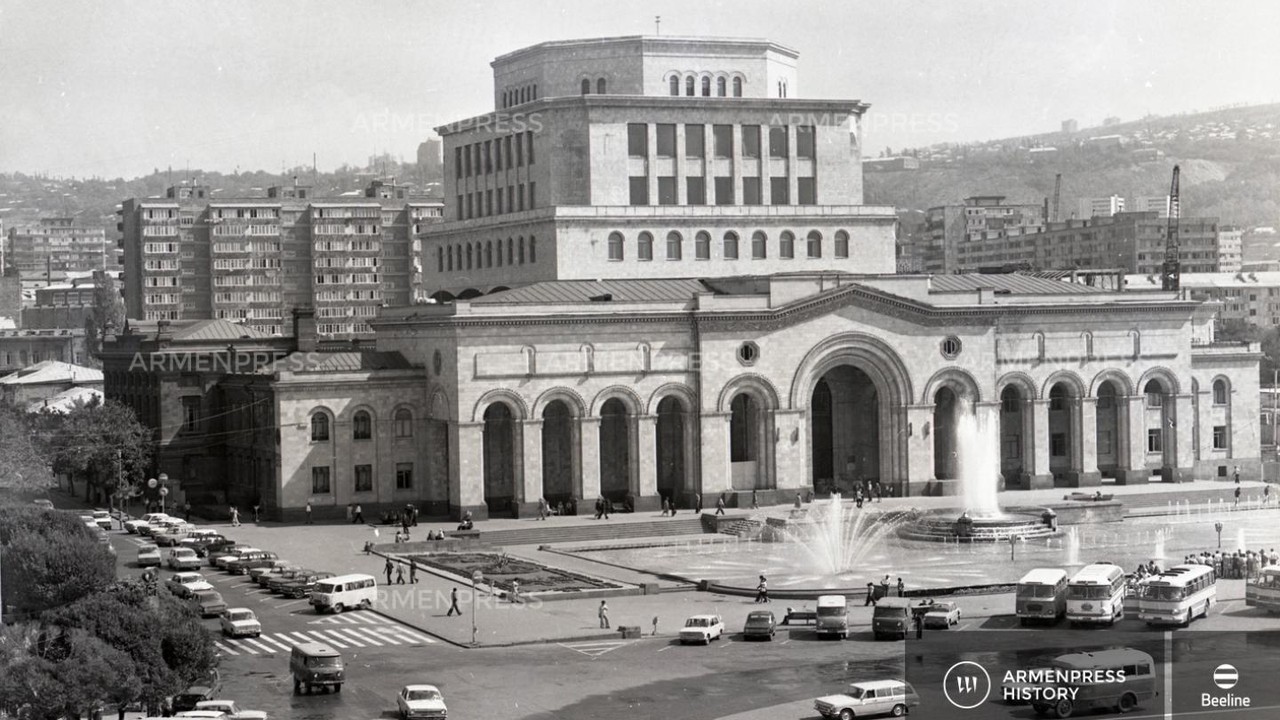YEREVAN CHRONOLOGY

1906
The first line of the Yerevan horse railroad began started operating, at first along Astafyevskaya (nowadays Abovyan) Street, and later to the railway station.
The industrial development and population growth brought to the creation of urban transport. Before the horse-drawn tram, transportation in the city was carried out by porters and carriages which moved without any schedule and cost much.The number of carriages and carts was less than 100. At midnight and on festive days the fares doubled.
After the construction of the railroad, the connection with the railway station became vital. The problem of construction of a horse-drawn tram which was in the Duma since the 90s of the XIX century, became a priority. The city department informed the media about such an intention. In 1895-1901 a number of organizations and individuals submit proposals and projects to the Duma. On February 25, 1900 the proposals were discussed at the conference of the city department and considered to be unfeasible. Taking into the budget interest a decision was made to start the construction of the horse-drawn tram after elimination of the problems with the city water supply and abattoirs. But the budget of the city was limited and the finances necessary for the construction were not found. That’s why the Duma and the department considered it necessary to install water supply systems and to assign the construction of the horse-drawn tram to a private entity. The contractor was obliged to put into operation the line of horse-drawn tram together with its all facilities-bridges, platforms and so on-within a year and a half. 20% of the incomes was to go the the city budget, and 80%-to the contractor.
On October 4, 1901 engineer-mechanic Arshank Babayan submitted the drafts agreements on the construction of water-supply system and the horse-drawn tram to the city department. On Ma2 1903 the city Duma affirmed A. Babayan’s agreements. It was decided to start the construction activities from 1904. But later, because of some circumstances the contract was handed to the wife of engineer Vasil Mirzoyan-Maria Mirzoyan who took to work. According to Mirzoyan’s project, the length of Yerevan horse-drawn tram line was to be 4 verstas and be comprised of two parts: one part to join the railway station and “Kantar” (the market), the other to join “Kantar” with Astafyan street (now Abovyan street) up to the building of the court. On September 17,1906 the Astafyan line of the horse-drawn tram was put into operation, and on December 11- the railway segment was put into operation as well. So, the construction took 2 years.
The horse-drawn tram was a covered carriage with 5-6 rows of long seats which moved along rails. The entrance was from the side. In the front part sat a coachman and in the back part sat a conductor. From the front and behind the tram had torches and bells attached. The number of passengers was limited to 20. The carriages were small and bulky, the tram moved uncomfortably and slowly, that’s why it worked without profits.
However it worked properly till August 1918. A model of a horse-drawn tram, tickets for it and photos are kept in the Yerevan History Museum as a historical recollection of our capital city.
Anzhela Hovhannisyan
Senior researcher at Yerevan History Museum
OTHER
2007
On November 16, the official opening ceremony of Northern Avenue took place, the construction of which began in 2002.
1921
The National Gallery of Armenia was founded in 1921 by the decision of the Government of Soviet Armenia, as one of the five departments of the State Museum - the Art Department. Martiros Saryan was appointed the director of the museum. As the first state museum of Armenia, it was officially opened to visitors on August 14, 1921.

